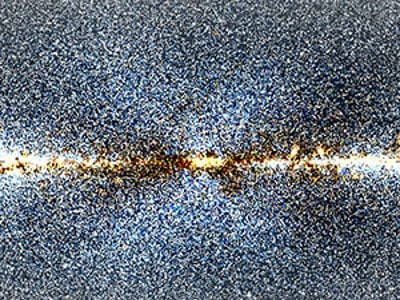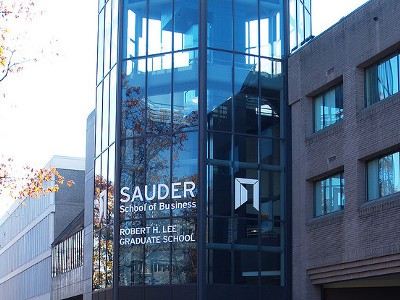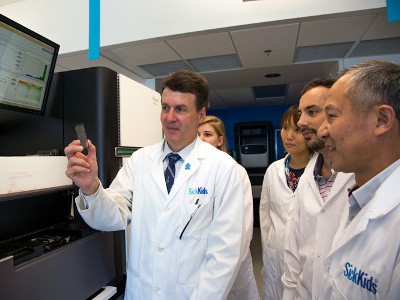

Dustin Lang, a Research Associate at the Dunlap Institute for Astronomy & Astrophysics at University of Toronto, has helped solve one of the controversies relating to the centre of our Milky Way galaxy, bringing us one step closer to how it formed to begin with, using Twitter.
Lang is co-author of a paper appearing in the July issue of the Astronomical Journal, entitled “The X-Shaped Bulge of the Milky Way Revealed by WISE”, submitted by lead author Melissa Ness, a postdoctoral researcher at the Max Planck Institute for Astronomy in Heidelberg.
WISE is the Wide-field Infrared Survey Explorer, a space telescope launched by NASA in 2009, which surveyed the entire sky in infrared, providing images of three-quarters of a billion galaxies, stars and asteroids before ending its initial mission in 2011.
After scanning the entire sky twice, NASA put WISE into hibernation mode and then reactivated it in 2013, renaming it NEOWISE and then sending it on a mission to identify potentially hazardous near-Earth objects.
As part of his work on the Sloan Digital Sky Survey, Lang created an interactive, browsable map to keep track of galaxies imaged by the WISE satellite, a portion of which he tweeted out in 2015.
It was at this point that Ness spotted the elusive X-shape at the centre of the Milky Way, which had never been directly observed but only hypothesized by astronomers using computer models, as well as observations of our own and other galaxies, all of which had only indirectly suggested the existence of the X-shaped structure.
“Ness saw the tweet and immediately recognized the importance of the X-shaped structure,” says Lang. “We arranged to meet at an upcoming conference we were both attending. The paper was born from that meeting. That’s the power of large surveys and open science!”
At that point, Ness and Lang decided to re-analyze the data, eventually resulting in their paper asserting the proof of the X-shape’s existence.
Astronomers had previously formulated two hypotheses for how the bulge at the centre of the Milky Way formed: it’s either the result of a merger with other galaxies, or it formed without external influence.
Using this image, which was downsampled from the larger WISE picture, Ness and Lang’s paper “shows that the X-shaped nature of the Milky Way bulge is self-evident and irrefutable.”
“There was controversy about whether the X-shaped structure existed,” says Lang. “But our paper gives a good view of the core of our own galaxy. I think it has provided pretty good evidence for the existence of the X-shaped structure.”
The X-shape has important implications for how the Milky Way formed to begin with, and thus for other spiral galaxies in general.
Our Milky Way is a collection of dust, gas and billions of stars, shaped like a disk approximately 100,000 light-years in diameter.
It has two spiral arms, a bar-shaped feature running through its centre, and a central bulge full of stars, which resembles a peanut-shape when viewed from the awkward vantage point where we sit, within the plane of a distant part of our own galaxy.
It’s like trying to understand the shape of your own nose by looking down and crossing your eyes.
But the WISE satellite gave us a clear shot of our own face, available for anyone willing to comb through the immensity of the image to take a look at.
The stakes for how the centre of the galaxy actually formed are quite high, a key component of which is the X-shape debate.
“The shape of the bulge tells us about how it has formed,” says Nesss. “We see the X-shape and boxy morphology so clearly in the WISE image and this demonstrates that internal formation processes have been the ones driving the bulge formation.”
Despite visual confirmation of the X-shape by Ness and Lang, skepticism remains about whether that actually means that the centre of the Milky Way is indeed structured that way.
A group of Spanish researchers have published a more recent paper casting doubt on the X-shape using a novel technique that they developed.
Their research doesn’t refute the X-shape hyphothesis, but merely keeps it in doubt.
If the X-shape theory holds up, it would prove that the Milky Way did not form out of a collision with another galaxy, which would have destroyed the X structure.
@davidwhogg ok fine pic.twitter.com/fqD57WIjhf
— Dustin Lang (@dstndstn) May 7, 2015
Leave a Reply
You must be logged in to post a comment.
RELATED POSTS

UBC’s Sauder School of Business is set to open Creative Destruction Lab – West, an offshoot of the successful Creative...





 Share
Share Tweet
Tweet Share
Share




Comment